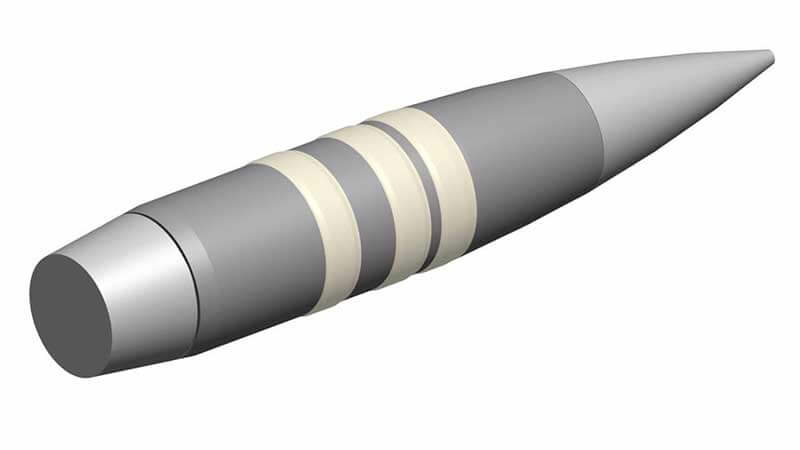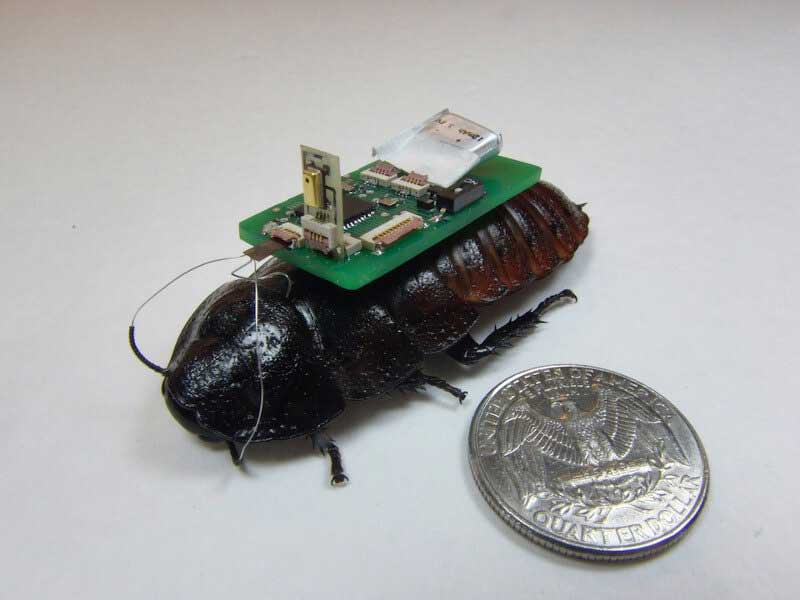- Drone-blasting weaponised laser beams
- Zombie guns that aim for the human mind
- (Nearly) non-lethal Thunder Generators blow up your ear drums
- Self-steering bullets that hunt down moving targets
- Iron Man Suit gives soldiers robotic boost on the battlefield
- Human controlled cyborg insects and drone bugs that perch on power lines to recharge
Compared to today, waging war in the old days was simple; two opposing masses of humanity charging at one another. Warriors would clash, pull back, and then it would start all over again. The reasons for war weren’t complicated. In this modern world, we have cyber attacks, guerrilla warfare and asymmetric deployments. The conflicts are global and they are complicated and most of us have lost track of exactly what’s going on. And then there’s the military tech which is starting to look like something sci-fi movies are made of; from insect drones that follow instructions to almost superhuman, exoskeleton-clad soldiers. Then there’s talk of ‘zombie guns’ and plasma force fields. It’s incredibly fascinating. And it’s terrifying. Let’s take a look at a few of the many sci-fi-style military technologies currently in development.
Drone-blasting weaponised laser beams
Currently we use laser – or amplified light – for scanning, cutting, microscopy, photochemistry and nuclear fusion, among others. As laser tech is getting cheaper, it’s now also starting to find its way onto the battlefield. A project in development is the Boeing Laser Avenger; a solid infrared laser beam, mounted on a converted Avenger anti aircraft vehicle, that sends scorching heat to its target. This technology can be used for long-distance detonation of explosives or to take out enemy drones and other hostiles.
Zombie guns that aim for the human mind
As part of the state arms procurement programme for 2011-2020, Russia’s defense minister Anatoly Serykov issued a statement about an electromagnetic weapon in development by their country’s scientists that directly short-circuits the higher cognitive functions of the brain. This may sound too crazy to be true. But it isn’t. Research into electromagnetic weapons has been carried out in Russia as well as the US since the 1950’s. These tests showed that low-frequency radiation can affect brain cells, alter psychological states and implant thoughts and commands directly into someone’s brain – basically turning them into a zombie. The technology is there. Now it’s only a matter of taking it to the battlefield.
(Nearly) non-lethal Thunder Generators blow up your ear drums
Non-lethal weapons have been in use for a number of years; one of these is the Thunder Generator, a sonic blaster crowd control weapon developed by the Israeli military. The weapon was initially developed to be used for scaring birds away from crops. The Thunder Generator makes use of pulse detonation technology which sends high-velocity blasts into the air by funnelling explosions into enormous barrels. The Generator is able to send out up to a hundred blasts per minute and it can continue doing so for hours. Also, a number of Generators could be networked in order to cover a larger area. The shockwaves can deafen and even knock back targets up to 50 metres away. Within 10 metres, it can cause gruesome death.
Self-steering bullets that hunt down moving targets
DARPA’s Exacto (Extreme Accuracy Tasked Ordinance) program has developed smart ammunition: self-guided bullets containing computer guidance technology that turn even an unskilled shooter into an accurate sniper. The computer manipulates tiny fins on the surface of the bullet so that it is able to correct its course mid-flight in order to counteract environmental factors – they even know how to find moving targets. The bullets can be fired from a .50 calibre weapon, which means they can also steer themselves while spinning. DARPA has developed these bullets to eliminate misfires which could reveal the location of a sniper and give adversaries the opportunity to strike back.

Iron Man Suit gives soldiers robotic boost on the battlefield
The US military has been working on the TALOS (Tactical Assault Light Operator Suit) for a number of years. The robotic exoskeleton is bulletproof and weaponised. It provides augmented strength and monitors the biometrics of the wearer. The TALOS has a reinforced helmet with sensory tools and integrated communication technology. One of the most incredible features of the TALOS is the liquid bulletproof body armour that covers more than 60 percent of the soldier’s body. It is an electricity activated shield that can instantly transform from liquid to solid. The TALOS is set to provide extra strength and protection on the battlefield and, basically, turns a regular soldier into a real-life Iron Man.
Human controlled cyborg insects and drone bugs that perch on power lines to recharge
In another recent DARPA project that aims to develop cyborgs insects that can be controlled by humans, insect larvae are harvested and fitted with electrical circuits. As the larvae go through metamorphosis, grow into adult bugs and their nervous systems are reorganised, the chip or circuit will be integrated in such a way that humans can transmit signals to control the bugs’ behaviour. Fitted with surveillance equipment, the bugs can be deployed to explore battlefields – within five feet of a target – and transmit information about its environment without ever being noticed. The concept is called the Cybug System or Hybrid Insect Micro-Electrical-Mechanical System (HI-MEMS).
In another cyborg-type bug project – this time by AetherMachines – an insect micro air vehicle with dual rotors and dangling body, has been developed and flight-tested. This 3D-printed drone takes off and lands vertically and its ultrasonic sensor and accelerometers enable it to perch. When on the ground, its shrouded rotors enable the insect drone to scuttle or crawl along various surfaces and inside buildings. The futuristic insect only has a ten-minute flight time but can scavenge off a power line to replenish its batteries. It does this within forty minutes – while it stares, observes and transmits video footage. Aethermachines’ insect also carries weapons and has the ability to aim and discharge its payload – explosive warheads or marking dye – after which the drone can return to base and be re-deployed.
 Can plasma force fields help repel or absorb shockwaves from explosives?
Can plasma force fields help repel or absorb shockwaves from explosives?
With threats like self-steering bullets and insect drones unleashing their payload, we need to find new types of armour to keep us safe. Not so long ago, Aerospace giant Boeing received a patent for a plasma force field that uses lasers, electricity and microwave radiation to repel or absorb shockwaves caused by explosions. The force field system is mounted on a building or a military vehicle; its sensors detect the shape and velocity of an incoming missile and determine the force of the explosion. The shield basically creates an interference field that absorbs the kinetic energy released during an explosion. This interference field is created by rapidly ‘superheating’ the air in front of the shockwave and turning it into plasma. The force field will not be able to prevent direct impact or ward off shrapnel, but it can protect buildings or vehicles from the after-effects of explosions nearby. The force field is still under development, but if it’s ever released, it could provide protection from energy emitted by nearby explosions.
Beware the artificially intelligent killer robots
In an open letter, over twenty thousand people – including some of the most respected names in technology and science such as Stephen Hawing, Elon Musk and Bill Gates as well as experts at the Cambridge, Harvard and Stanford Universities – have been sending out serious warnings about the rapid development in artificial intelligence and robotics, in particular the LAWS (lethal autonomous weapons systems – or killer robots). Although there’s advantages to robots in the battlefield (they don’t need food or sleep, they are emotionless thus fearless plus they are fast, accurate and unstoppable) – it also increases the likelihood of military action taking place. The letter urges countries around the world to prevent a global AI arms race from starting as these weapons falling into the hands of terrorists, warlords and dictators is a real and frightening possibility. The fact that there’s an anti-robot arms race taking place as well – which includes the development of computer viruses and electronic pulse bombs to stop the AI robots – illustrates the seriousness of these developments.
Tilting the balance of AI in favour of humanity
As robotics and LAWS continue to advance, the tech world’s titans warning about the potential risks of artificial intelligence in the military comes as no surprise. For the foreseeable future, however, we continue to see robots increasingly being created for good, not for evil. We do however need to keep a close eye on these developments and tilt the balance of artificial intelligence in general and sci-fi military development in particular, in humanity’s favour.





